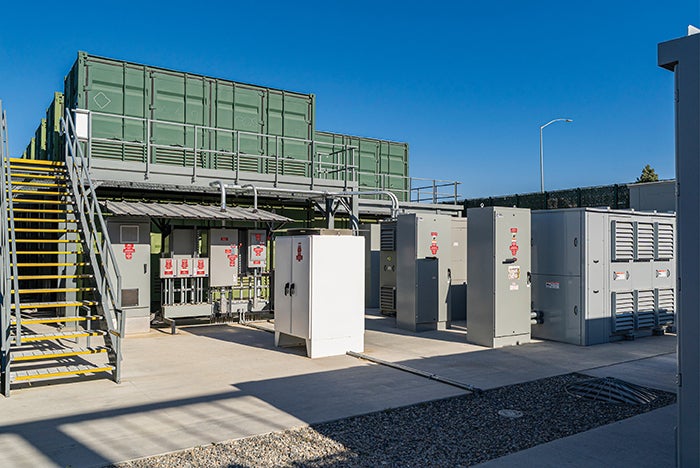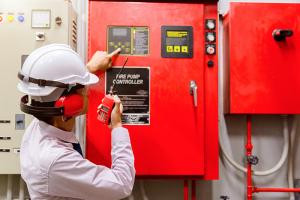Kaiser Permanente operationalizes microgrid system

A new solar battery system enables the microgrid at the Kaiser Permanente Ontario Medical Center to serve as the initial emergency power backup system during an outage.
Image courtesy of Kaiser Permanente
The Kaiser Permanente Ontario (Calif.) Medical Center’s on-site renewable energy microgrid is the result of a multiyear effort to install and certify a system capable of sustainable operation even through emergency conditions.
The microgrid was funded through an $8.3 million grant from the California Energy Commission to Faraday Microgrids in Corona, Calif. Faraday designed and built the system, which integrates solar, fuel cells, batteries and existing diesel generators into one system.
The microgrid is primarily fueled by solar arrays located at the top of the center’s multistory parking garage and above ground-level parking. The on-site arrays, installed by Ameresco based in Framingham, Mass., under a power purchase agreement with Kaiser Permanente, can generate 2 megawatts of solar energy. A 1-megawatt fuel cell ensures continuous power is supplied to the medical center. Through the installation of a 9-megawatt-hour battery, the microgrid also can serve as the initial emergency power backup system during a power outage.
“[The] battery component was certified by the California Department of Health Care Access and Information to operate as a primary backup power source in April 2025,” explains Ramé Hemstreet, vice president for operations and chief energy officer at Kaiser Permanente.
Hemstreet says the batteries are made of zinc bromide, which uses nontoxic materials and does not carry the same risk of combustion as lithium-ion. “Overall, the life cycle of a zinc bromide battery has a relatively low-impact environmental footprint during manufacture, operation and at end-of-life,” he says.
The microgrid can deliver emergency power for up to 10 continuous hours, after which the hospital’s existing diesel generators kick in as a secondary backup capacity to ensure coverage through an extended outage.
The power-generating components are operated via an automated control system that manages how electricity is produced, stored and used at the site. This allows the medical center to alternate between storing renewable energy generated at times when buying energy from the grid is inexpensive and discharging stored energy at times when the grid’s energy is more expensive.




